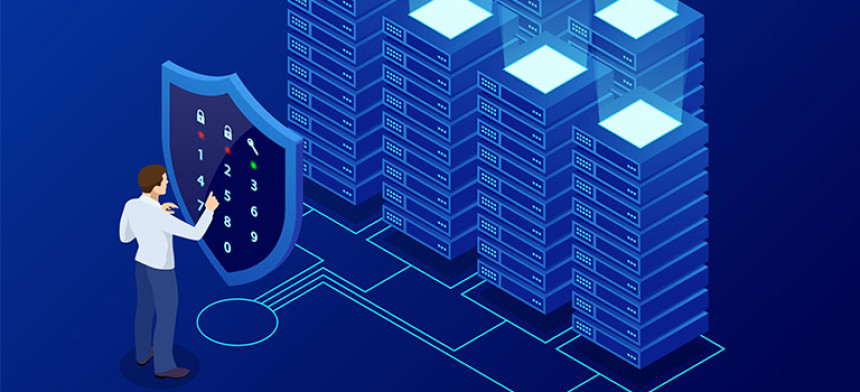Any business that collects or stores data online or relies on technology is at risk of cyberattacks. These attacks can cost companies millions in lost revenue or stolen data records.
External threats can range from beginner “script kiddies” leveraging ready-made threat tools to sophisticated operators who target specific organizational defenses. These attackers seek profits by stealing confidential data, demanding a ransom, or disrupting service.Internet of Things (IoT)
With the rise of digitalization and Industry 4.0, businesses rely more than ever on connected digital systems. Several businesses need to realize what is cybersecurity risk and its possible impact on business processes. The reliance on connected systems exposes the company to cyber attacks by allowing hackers to steal intellectual property, disrupt production processes, or even cause financial losses. A single attack can also impact the entire supply chain and lead to long-term operational downtime.
The Internet of Things (IoT) refers to the millions of everyday physical objects embedded with sensors, allowing them to connect to the Internet and share data. It has allowed for the digitization of everything from vehicles and appliances to smart thermostats and kitchen devices. It has also enabled these devices to be remotely monitored and controlled.
These IoT devices create enormous amounts of data, with tech analyst firm IDC predicting that IoT will be creating more than 79.4 zettabytes of data every year within five years. Bad actors who may use this data for purposes such as eavesdropping on private conversations or tracking an individual’s movements can intercept this data. It can also be used to roll up IoT devices into massive botnets, such as the Mirai botnet, which caused a globally distributed denial-of-service attack in 2016.
IoT security needs to be prioritized as any other business technology. This is because the consequences of a hacking attack on IoT can have serious real-world impacts, such as industrial espionage or an assault on critical infrastructure like dams and power grids.Business Email Compromise (BEC)
Business email compromise (BEC) is a sophisticated cybercrime tactic that attackers use to impersonate trusted individuals to trick employees into making unauthorized financial transactions and sharing sensitive information. Attackers leverage careful surveillance and social engineering to create messages that appear genuine. Because BEC attacks often involve wire transfers, significantly threatening businesses’ finances and reputations. Attackers target employees with access to company accounts and may be responsible for wire transfer processes.
Attackers usually initiate a BEC attack by compromising one or more email accounts. They then craft convincing emails that impersonate a trusted individual, such as an executive or vendor. They will usually include a reason for the request and provide clear instructions on how much money to transfer. They will also ask their victim not to contact the sender through another communication channel, a common way for attackers to add urgency to a request.
BEC attacks are difficult to detect and stop because they do not contain the typical indicators of malware or phishing that legacy security tools look for. It is important to provide employee training and educate new hires on how to spot a suspicious email. Malware Attacks
Malware refers to any software application designed to infect or disrupt computer systems. Cybercriminals use malware to steal confidential information, access private systems and networks, cause disruptions, or extort victims’ money. Malware can infect endpoint devices such as personal computers, mobile phones, and even connected IoT devices.
Attackers target companies because they recognize the value of their data. A successful breach can cost a company millions of dollars in fines, legal fees, and lost business. It can also damage a company’s reputation and trust with customers.
Some of the most common malware attacks include viruses, worms, Trojans, and ransomware. Viruses disrupt a device’s normal function, while worms can self-replicate and spread to other devices without the user’s knowledge. Trojan malware disguises itself as a legitimate program to gain entry into a system. Hackers often combine different types of malware into “hybrid” threats to bypass detection by antimalware software.
Attackers are increasingly targeting smartphones because they carry more sensitive information than desktops. A smartphone contains financial information, travel locations, GPS tracking, shopping history, and many other pieces of private data. Hackers can use the constant Wi-Fi or cellular connection on smartphones to upload stolen information to attackers’ servers.Ransomware Attacks
A cyberattack is an expensive headache for any business. The average data breach costs a company almost $3 million. That’s a lot of money that could have been invested in the future of your business.
Ransomware attacks, where attackers lock your data and demand a fee to unlock it, are especially costly. Your data may be permanently lost if you’re a small business that can’t afford to pay a ransom. That’s why implementing a layered security approach is critical. This includes ensuring all employees receive cybersecurity training, using secure passwords, and updating your software. In addition to financial loss, ransomware attacks can cause damage to your reputation and customer trust. They can also result in regulatory penalties and legal fees.
Attackers rely on several methods to spread ransomware. Some of these include phishing emails with malicious attachments, drive-by downloads (when visitors to infected websites unknowingly download malware without their knowledge), and malvertising, which is when hackers hijack legitimate digital ads to pass on ransomware.
While most bad actors are looking for cash, they can also seek data in the form of credit cards and personal information or intellectual property source codes.





